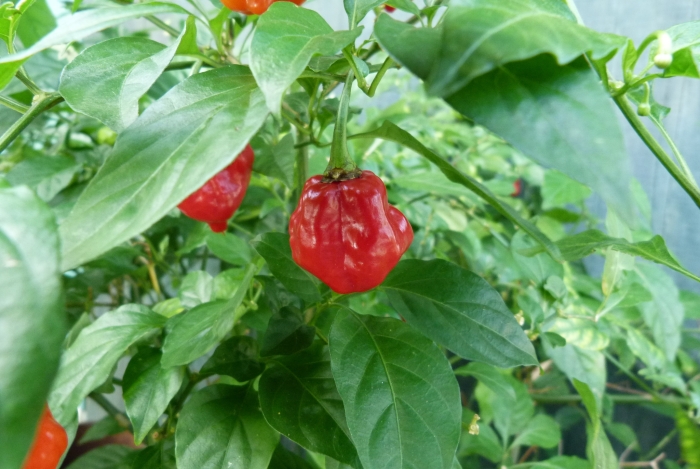Habanero-Type Pepper
(Capsicum chinense)
Habanero-Type Pepper (Capsicum chinense)
/
/

© Colin Meurk
CC BY-SA 4.0

























Estimated Native Range
Summary
Capsicum chinense is highly valued for its pungent fruit, which is widely used in culinary applications for its significant heat and flavor. It is a staple in Caribbean and Yucatán cuisine and is also popular for making hot sauces and condiments. In cultivation, it requires a warm and humid environment, consistent moisture without waterlogging, and well-draining, fertile soil with a neutral pH. Full sun exposure is ideal for optimal growth and fruit production. While it can be grown as an annual in temperate regions, it is perennial in its native tropical habitat. Gardeners should handle the fruit with care due to its capsaicin content, which can cause skin irritation.CC BY-SA 4.0
Plant Description
- Plant Type: Shrub
- Height: 1-2.5 feet
- Width: 1-2 feet
- Growth Rate: Moderate
- Flower Color: White
- Flowering Season: Spring, Summer, Fall
- Leaf Retention: Evergreen
Growth Requirements
- Sun: Full Sun
- Water: Medium
- Drainage: Medium, Slow
Common Uses
Border Plant, Edible*Disclaimer: Easyscape's listed plant edibility is for informational use. Always verify the safety and proper identification of any plant before consumption., Potted Plant
Natural Habitat
Native to the Amazonian region of South America and thrives in tropical and subtropical climates
Other Names
Common Names: Bonney Peppers , Habanero Pepper , Scotch Bonnet , Bonnet Pepper , Datil Pepper , Caribbean Red Peppers
Scientific Names: Capsicum chinense , Capsicum annuum var. cerasiforme , Capsicum annuum var. chinense , Capsicum annuum var. luteum , Capsicum annuum var. milleri , Capsicum assamicum , Capsicum cerasiforme , Capsicum cerasiforme , Capsicum cerasiforme , Capsicum cerasiforme var. maurocarpum
GBIF Accepted Name: